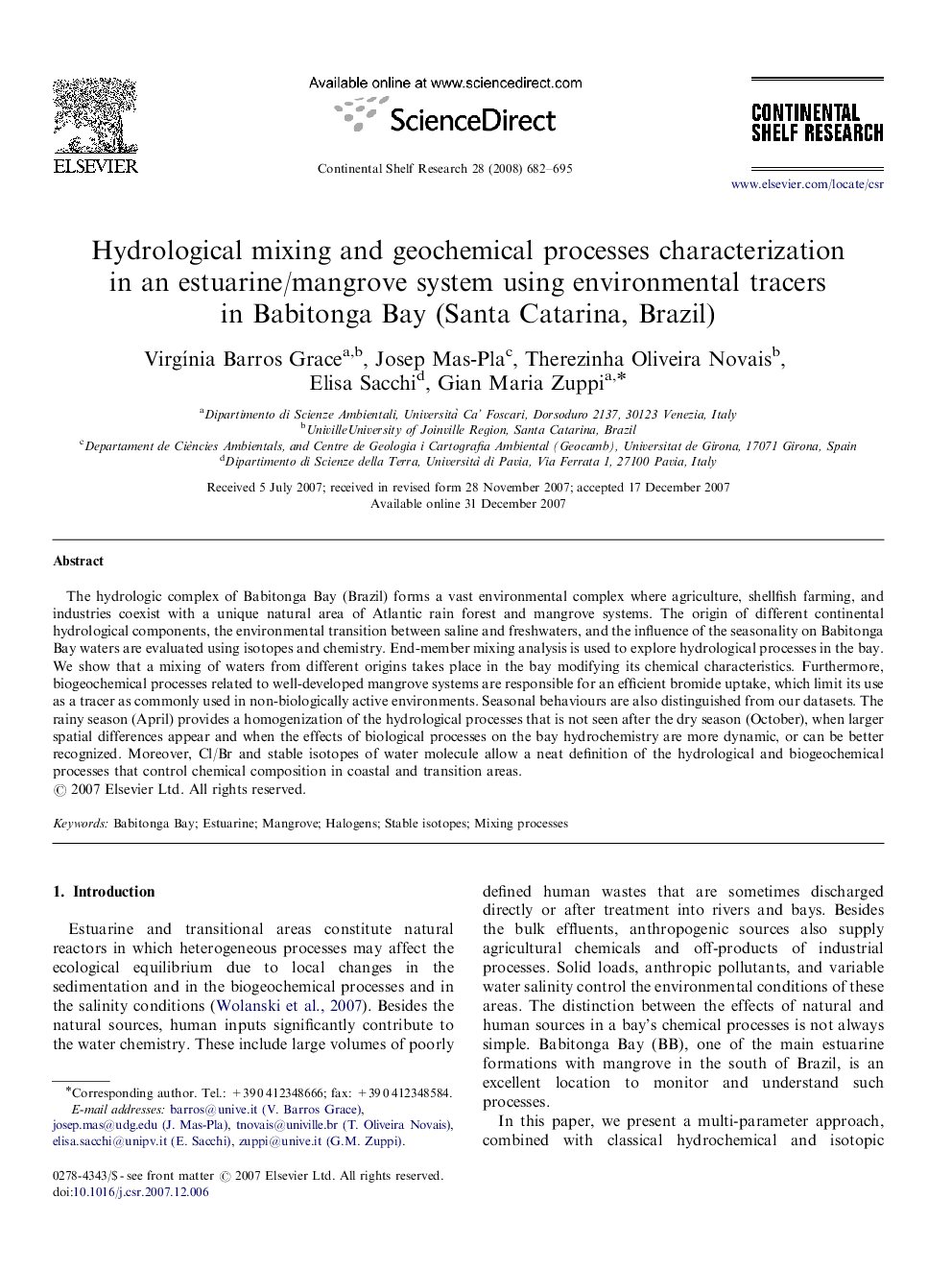| Article ID | Journal | Published Year | Pages | File Type |
|---|---|---|---|---|
| 4533285 | Continental Shelf Research | 2008 | 14 Pages |
The hydrologic complex of Babitonga Bay (Brazil) forms a vast environmental complex where agriculture, shellfish farming, and industries coexist with a unique natural area of Atlantic rain forest and mangrove systems. The origin of different continental hydrological components, the environmental transition between saline and freshwaters, and the influence of the seasonality on Babitonga Bay waters are evaluated using isotopes and chemistry. End-member mixing analysis is used to explore hydrological processes in the bay. We show that a mixing of waters from different origins takes place in the bay modifying its chemical characteristics. Furthermore, biogeochemical processes related to well-developed mangrove systems are responsible for an efficient bromide uptake, which limit its use as a tracer as commonly used in non-biologically active environments. Seasonal behaviours are also distinguished from our datasets. The rainy season (April) provides a homogenization of the hydrological processes that is not seen after the dry season (October), when larger spatial differences appear and when the effects of biological processes on the bay hydrochemistry are more dynamic, or can be better recognized. Moreover, Cl/Br and stable isotopes of water molecule allow a neat definition of the hydrological and biogeochemical processes that control chemical composition in coastal and transition areas.
